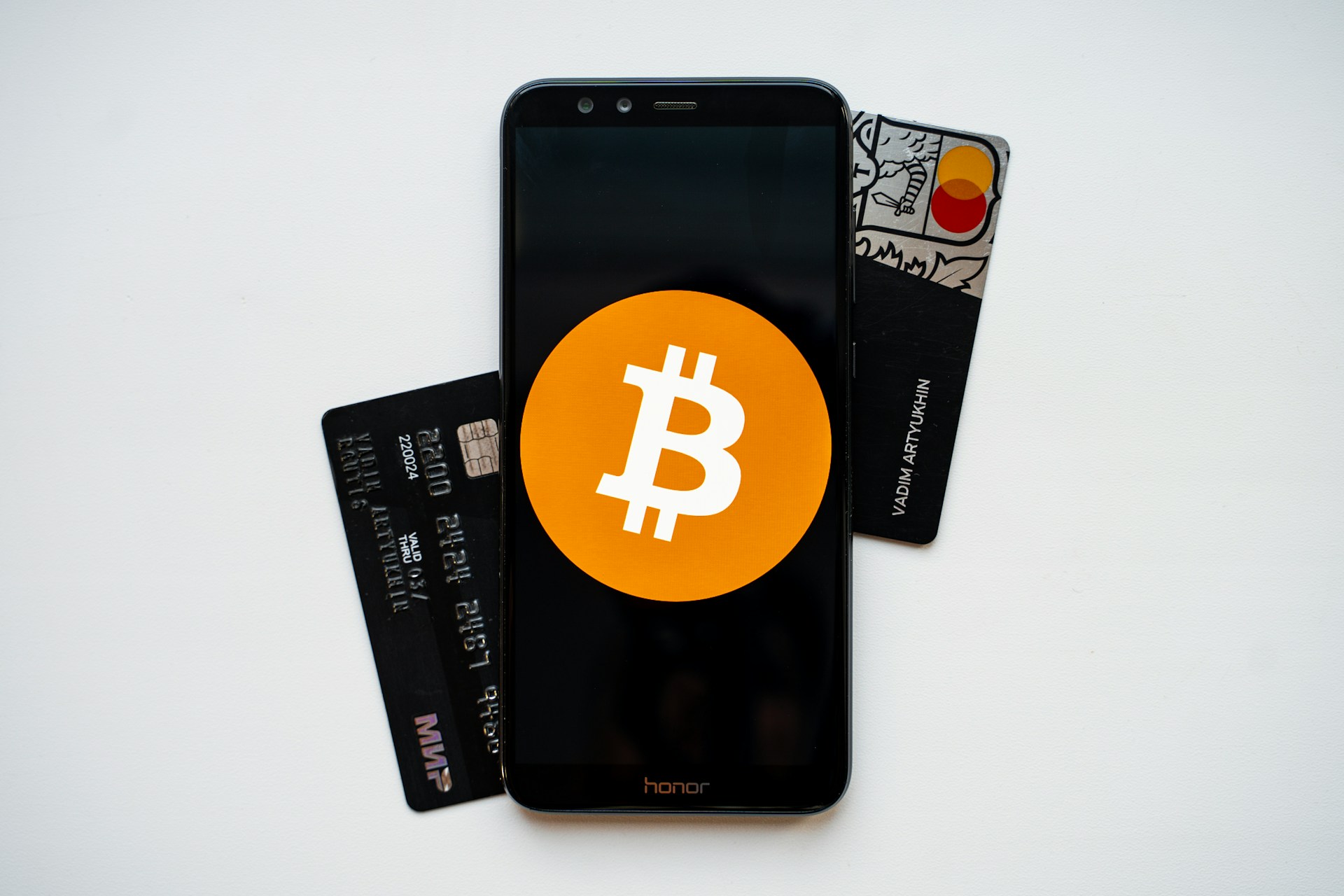Table of contents

Overview of Crypto Advertising Platforms
Crypto advertising platforms are specialized tools and networks that help crypto projects, exchanges, wallets and related services reach audiences interested in digital currencies. They sit at the intersection of advertising and crypto markets. They differ from general ad networks by focusing on crypto topics, tokens, blockchain products and the specific rules that govern crypto ads. Think of them as a bridge between a publisher who owns an app or site and an advertiser who wants to show a crypto related message to the right user.
At a high level, crypto advertising platforms streamline three things: planning and buying media, delivering the right creative to the right audience, and measuring results. They connect advertisers with a large pool of crypto friendly publishers such as crypto news sites, wallet apps, blockchain games and educational portals. They deliver ads through multiple channels including display banners, in-app ads, video, and sometimes influencer placements, all within a regulated framework that aims to reduce risk for both sides.
Key terms explained: a demand side platform or DSP is a tool for advertisers to buy impressions programmatically across many sites and apps. A supply side platform or SSP is a tool for publishers to manage and optimize their inventory. Real-time bidding or RTB is the auction process that happens in milliseconds as an impression becomes available. An ad exchange is a marketplace that connects buyers and sellers. CPM or cost per thousand impressions, CPC or cost per click, CPA or cost per action describe how advertisers pay for results rather than just views. A cookie or device ID is a small piece of data used to recognize a user across sites.
Why these platforms matter: crypto audiences tend to be highly engaged but also highly sensitive to ad fraud and compliance issues. Crypto advertising platforms offer tighter controls, better targeting for tokens and wallets, and partners that understand crypto terms and events. They also provide safety tools such as domain whitelists, blacklists and creative review to prevent misleading claims about returns or guarantees.
Real world analogy: imagine a concert organizer who wants to sell tickets. A crypto advertising platform acts like a talent agency that knows which venues attract crypto fans, and it handles the bidding, placement and tracking so the advertiser pays only for people who actually notice and act on the ad. The platform brings together the advertiser, the publisher and the data, like a three-legged stool, ensuring balance in reach, relevance and results.
How to use crypto advertising platforms: in practice the steps are simple: set clear goals such as brand awareness or app installs, define the target audience such as crypto enthusiasts or traders, choose the right inventory sources, configure bidding settings in the DSP, implement tracking to measure actions, and review results regularly to optimize. Start with a small budget for testing, then scale on proven performers. Also pay attention to compliance and platform policies to avoid rejection or suspension.
Common challenges include fraud risk, traffic quality, banner fatigue and policy restrictions on certain crypto products. Crypto advertising platforms invest in automated fraud detection, traffic quality scoring and domain checks, but advertisers still need to perform due diligence. The regulatory landscape changes fast, so staying informed matters. Partnering with a reputable platform helps because they keep up to date and provide guidance.
Bottom line: crypto advertising platforms provide a focused, efficient way to reach crypto minded audiences, measure the impact of campaigns and optimize spend. They differ from mainstream ad networks in their audience, inventory and safety controls, yet they share the goal of connecting advertisers with the right users in a transparent, scalable way.

Key Features and Technologies
When you compare crypto advertising platforms, you want a solution that blends reach, safety and measurable results. The following features and underlying technologies power these platforms and help advertisers achieve clear returns. Each item includes a plain language explanation of the term to keep things simple.
- Programmatic buying and real-time bidding - An automated system that buys ad space in milliseconds as an impression becomes available. This relies on a demand-side platform (DSP) to bid against others in an ad exchange, aiming for the best balance of price and placement. Think of it like an auction where the winner gets the next ad shown to a user.
- Audience targeting and segmentation - Tools that let you reach people based on interests, behavior and intent such as crypto trading, wallets or blockchain news. They use first-party data, cookies and device IDs to group users, then deliver the right message to the right person. It is like using a map to find your exact audience in a crowded city.
- Fraud prevention and brand safety - Systems that reduce fake traffic, bots and unsafe placements. You’ll see signals like traffic quality scores, domain blacklists and viewability checks. In plain terms, it stops non human clicks from wasting your budget and keeps your brand appearing on trustworthy sites.
- Attribution and analytics - Methods to measure what works, from last-click to multi-touch attribution. Multi-touch attribution credits multiple ads along a user journey, so you can see which steps led to a sign up or purchase and optimize accordingly.
- Creative optimization and formats - Support for multiple ad types such as display, video, native and playable formats, plus dynamic creative optimization (DCO) that tweaks headlines and visuals in real time. This helps each impression feel relevant and engaging to the viewer.
- Compliance and transparency tools - Privacy and data protection features that align with laws like GDPR and CCPA, plus clear reporting and spend visibility. Advertisers can opt out, review detailed dashboards and understand where every dollar went.
Audience Targeting and Traffic Sources
In the world of crypto advertising platforms, audience targeting and traffic sources are the engine that drives results. Audience targeting means showing your message to the people most likely to care about crypto, such as traders, investors, developers, NFT fans, or users who already visit crypto sites. Traffic sources are the channels where your ads appear. Together they determine who sees your ads, how often, and whether they take action.
Key terms you will hear often:
- Audience targeting: selecting groups by location, interests, behavior, and device type.
- Retargeting: showing ads to people who have already interacted with your site or app.
- Lookalike audiences: finding new users who resemble your best customers.
- Frequency capping: limiting how many times a person sees your ad to avoid fatigue.
- Conversion tracking: measuring the outcome of ads, often using pixels or SDKs to record actions like sign ups or purchases.
Choosing the right mix of traffic sources depends on your product, funnel, and budget. For example, you might use social ads to spark interest, and then retarget visitors on a display network to move them toward a sign up or purchase. The goal is to align your targeting with the right source so your message lands in a relevant context.
| Traffic Source | What it is | Pros | Cons | Best For | Example Platforms |
|---|---|---|---|---|---|
| Social media ads | Ads placed on social networks like X, Reddit, and YouTube to reach crypto interested audiences. | Precise audience targeting, fast feedback, varied formats | Platform policy limits for crypto, potential ad fatigue | Brand awareness, education, demand generation | X Ads, Reddit Ads, YouTube Ads |
| Display and programmatic networks | Banner and video ads served across many sites through demand side platforms (DSPs). | Scalable reach, strong retargeting, cost control through bidding | Brand safety risks, creative fatigue, ad fraud potential | Broad funnel, building familiarity, retargeting | DoubleClick/Google Display no longer crypto exclusive, programmatic partners, DSPs |
| Crypto specific ad networks | Networks focused on crypto audiences that curate crypto friendly inventory. | Contextual relevance, typically better acceptance for crypto ads | Smaller inventory, policy shifts can affect reach | Direct response to crypto users, awareness among enthusiasts | Coinzilla, CoinTraffic, Bitmedia, AdEx |
| Content marketing and influencer partnerships | Sponsorships and paid mentions on blogs, newsletters, and crypto channels | Trust through credible voices, long tail traffic, education | Measuring impact can be tricky, potential bias in results | Education first, conversion through trusted sources | BeInCrypto, crypto YouTube channels, crypto podcasts, sponsor banners on editorial sites |
Tips for applying these ideas in crypto advertising platforms include starting with clear buyer personas, using retargeting to move warm leads down the funnel, and testing one channel at a time. Always align your creative with the audience and platform policy, and track metrics such as click through rate (CTR), cost per click (CPC), cost per acquisition (CPA), and return on ad spend (ROAS). By combining smart targeting with the right traffic sources, you can maximize the effectiveness of your crypto advertising platforms campaigns while staying compliant and trustworthy.

Popular Ad Formats in Crypto Marketing
In the world of crypto advertising platforms, choosing the right ad format is as important as picking the right audience. Different formats serve different goals: awareness, education, or conversions. Think of it as a toolbox you can reach into for the job at hand. Here are the main formats you will encounter and how they work in practice.
Display banners and programmatic ads
Display banners are the classic online ads you see on crypto news sites, forums, and wallets. They come in a range of sizes and can be static images or animated graphics. In crypto marketing these banners are often used for quick visibility and bold brand statements. The price is usually CPM, cost per thousand impressions, and with programmatic buying you bid in real time to show your banner to the right people at the right moment. A simple analogy: display ads are storefront signs on a busy street, while programmatic is the smart route that picks the best time and place to display without you watching every corner.
Tip: start with a few high traffic sites in your niche and test different creatives and calls to action. Compare a bold color design against a clean, minimal one to learn what resonates with crypto traders.
Native advertising and sponsored content
Native ads blend with the surrounding editorial content. They feel less like ads and more like helpful articles or guides. In crypto advertising platforms this format is popular on crypto news portals and educational sites. The main advantage is higher engagement because readers see content that matches the site’s vibe. The drawback is disclosure: readers should know when content is sponsored. To maintain trust, pair native pieces with transparent labeling and a clear offer, such as a free research report or a token sale calendar.
Video ads and sponsorships
Video is powerful because it conveys explanation and emotion quickly. In crypto marketing you’ll find pre roll and mid roll spots on video platforms, streaming services, and even game streams. Short 15 to 30 second clips work best for quick messages, while longer formats of 60 seconds or more let you tell a story about how a product solves a problem. Think of video ads as a product demo you watch on your own time. Use clear visuals, simple language, and a strong call to action like “learn more” or “join the waitlist.”
Influencer marketing
Influencers in the crypto space range from journalists and podcasters to traders with active communities on X, YouTube, or TikTok. This format leverages word of mouth and trust built over time. The analogy is choosing a trusted friend to explain a new wallet or a security feature. When working with influencers, discuss deliverables, disclosures, and compensation. Micro influencers often deliver higher engagement at a lower cost, because their audience feels closer and more loyal. Measuring success means tracking referral codes, promo links, or affiliate partnerships tied to real actions like signups or token purchases.
Podcast advertising and audio sponsorships
Podcasts in crypto often attract highly engaged listeners who tune in for deep dives. Host read ads feel more authentic than a jingle because the host can explain benefits in their own voice. Sponsorships may include branded segments, episode mentions, and show notes with links. For marketers this format works well for education and onboarding, such as walking listeners through a new yield farming feature or outlining a security best practice.
Email newsletters and sponsored emails
Crypto newsletters compile a curated digest of market news, token updates, and tutorials. Advertising in these spaces gives access to a highly targeted audience, often with good open rates and strong trust. Sponsored placements can be banners in the email or dedicated messages. The key here is relevance and cadence: align your content with the newsletter’s theme and deliver value with a clear offer such as a free report or access to a tool. Always respect unsubscribe options and privacy rules.
Affiliate links and referral programs
Affiliate marketing uses unique tracking links to credit partners for user actions, like signups or purchases. In crypto advertising platforms, affiliates can push wallets, exchanges, or educational courses. The advantage is performance based payments: you pay only when a result occurs. The risk is fraud risk and cookie window management, so you will want strict tracking, clear terms, and quality control on the referrals.
Sponsored events, AMAs and community initiatives
Events and community programs create live experiences that can sharpen trust and visibility. AMAs, live streams, hackathons, and round tables give potential users a direct line to the team. In the context of crypto advertising platforms these formats work well when paired with follow up content such as tutorials or a product tour. Measure success by attendance, engagement, and post event signups.
Bottom line: if you are evaluating crypto advertising platforms, the right mix of ad formats helps you reach audiences at different stages of the customer journey. Display, native, video, influencer, audio, email, affiliate, and event driven formats each play their part, and the best campaigns combine several formats to reinforce the message across touchpoints.
Security, Fraud Protection, and Compliance
In the world of crypto advertising platforms, security, fraud protection, and compliance are not optional. They are the foundation that protects users, advertisers, and the platform alike. Think of it as a layered safety net: encryption is the locks, fraud protection is the watchdog, and compliance is the rulebook you follow. Below are the key practices that keep crypto advertising platforms trustworthy.
- Security by design and defense in depth - Build the system with multiple protective layers from day one. Use strong authentication, role based access control, and regular software updates. This is like a home with solid locks, a camera, and a monitored alarm that work together to stop intruders.
- Data protection and privacy - Protect data both when it is stored and when it moves. Use encryption at rest and in transit, minimize the data you collect, and follow privacy laws such as GDPR or CCPA. This is the digital equivalent of keeping personal information in a locked safe and only sharing what is strictly needed.
- Fraud detection and traffic quality - For crypto advertising platforms, detect and block invalid clicks, bot traffic, and fake publishers before they hurt your campaigns. Techniques include behavior analysis, device fingerprinting, real time anomaly alerts, and third party verification vendors that independently validate traffic quality. This is like having a vet check for every ad impression to ensure it comes from a real person.
- Compliance and governance - Stay within the rules that apply to advertising, including sanctions screening, advertiser due diligence, clear disclosures, and consent where required. Use audits and certifications to prove you meet standards such as SOC 2 or ISO 27001. This is your rulebook and your external proof that you play fair.
- Secure development and API practices - Follow secure coding, regular code reviews, and continuous monitoring. Protect API access with OAuth tokens, TLS, and strict access controls, and rotate credentials to reduce risk. This is like keeping the key ring tidy and changing keys regularly after a staff change.
- Incident response and business continuity - Have a written plan for how to detect, respond to, and recover from security incidents. Train the team, back up data, test recovery procedures, and communicate with stakeholders quickly if something goes wrong. This is your fire drill and disaster plan rolled into one.

How to Choose the Right Crypto Ad Platform
Picking the right crypto advertising platform is a strategic move. It affects how well you reach your audience, how much you pay, and how your brand is perceived. When you compare crypto advertising platforms, look for a balance of reach, safety, and transparent measurement. The goal is to get your message in front of the right people without overspending or risking your reputation.
- Reach and targeting options: Can the platform reach crypto users such as traders, developers, and enthusiasts who match your product? Look for precise targeting by interests, keywords, and behavior, plus retargeting to re engage visitors who showed interest.
- Ad formats and creative flexibility: Does the platform support the formats you need, like banners, native ads, video, and sponsored content? Consider whether you can test multiple creatives and adapt them quickly.
- Pricing models and ROI clarity: Understand the costs upfront. Common models include cost per thousand impressions (CPM), cost per click (CPC), and cost per acquisition (CPA). Ask for a clear path to calculate return on investment (ROI) and expected conversions.
- Brand safety and compliance: Crypto ads face stricter rules in many regions. Check if the platform conducts advertiser vetting, content guidelines, and KYC checks, plus measures to keep your brand safe from scams and fraudulent sites.
- Fraud protection and measurement: Look for fraud detection, invalid traffic filters, and third party verification. Reliable attribution helps you know which touchpoints drove results and when to optimize.
- Onboarding, support and reliability: A smooth onboarding process, clear documentation, and responsive support matter. A platform with good uptime and a track record of working with crypto projects saves time and reduces risk.
In practice, start with a small test budget and run parallel campaigns on two suitable crypto advertising platforms. Compare reach, cost per result, and conversion quality. Use objective metrics and a short runway to decide which platform best matches your goals. If your aim is broad awareness among crypto beginners, you may prioritize reach and educational content. If you want action like sign ups or token purchases, focus on targeting, attribution, and strong fraud protection.
Think of this choice like picking a venue for a launch event. You want a place that attracts the right crowd, fits your budget, and aligns with your brand rules. The right crypto advertising platform will feel like a natural extension of your marketing plan, not an afterthought. By evaluating these factors, you can choose a platform that supports steady growth and clear results for your crypto project.
Crypto ADS

Crypto Ad Network
Reach the Right Audience with a Powerful Crypto Ad Network

Bitcoin Ads
Run Targeted Bitcoin Ads That Drive Real Engagement

Crypto Monetization
Crypto Monetization Solutions for Web3 Publishers

Crypto Ad Strategy
Crypto Ad Strategy That Drives Results

